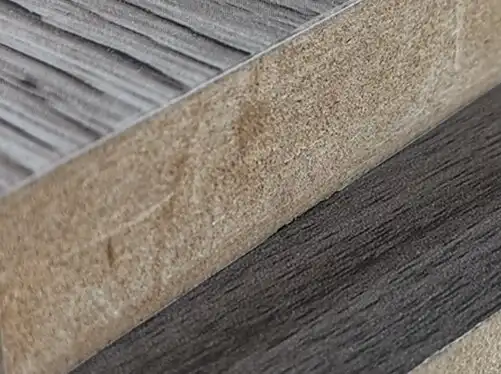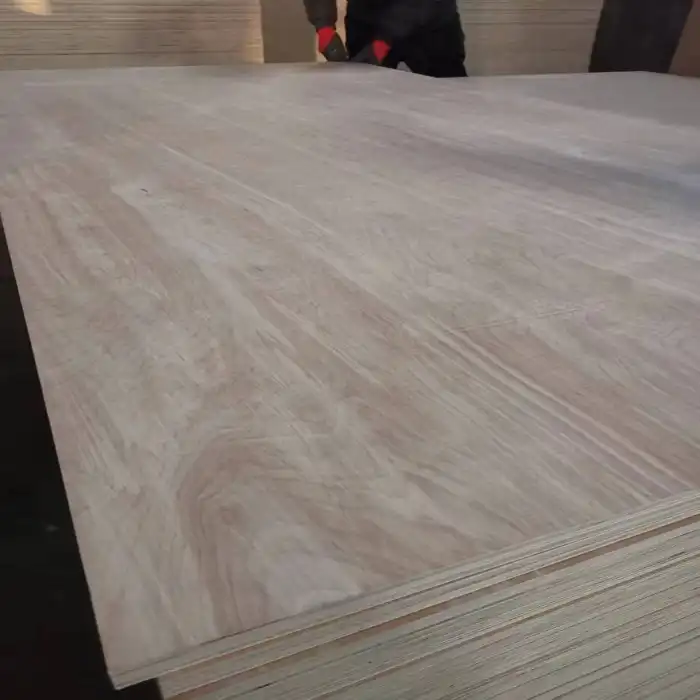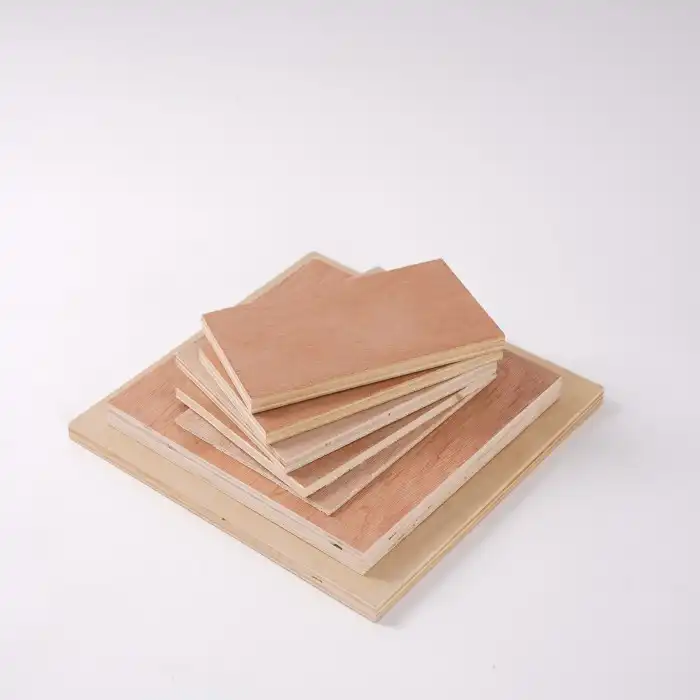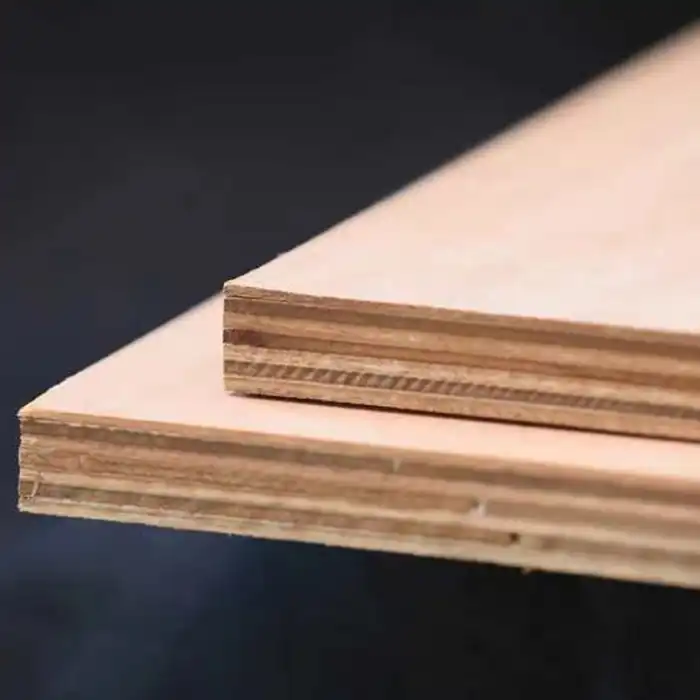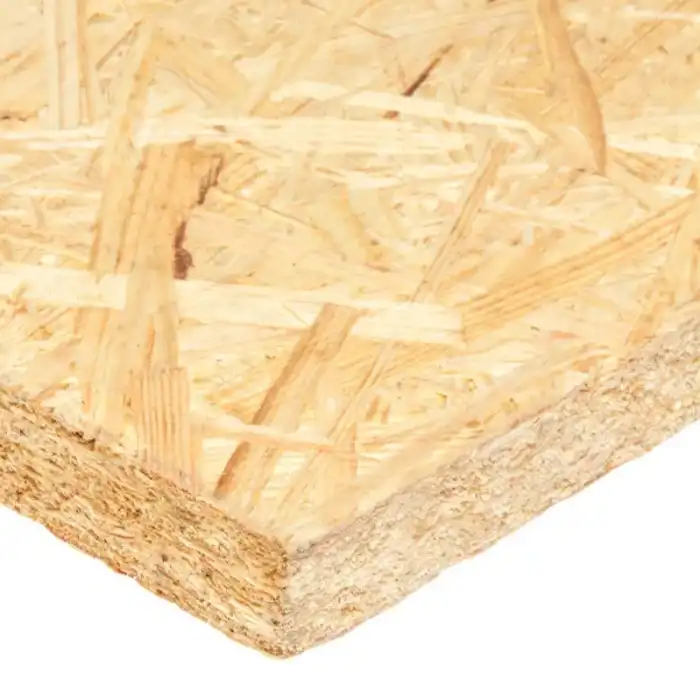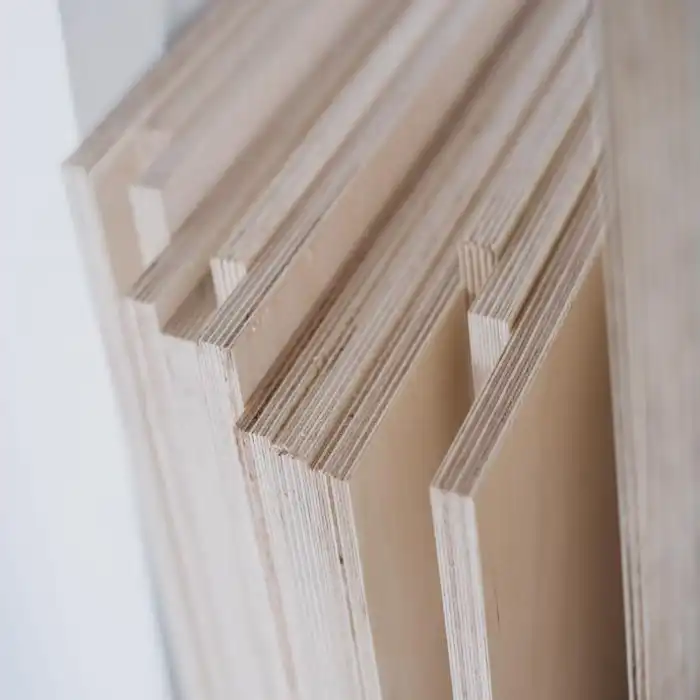
What Are the Key Advantages of Using Red Faced Poplar Core Plywood in Cabinet Production?
2025-07-11
When it comes to cabinet manufacturing, selecting the right materials can make the difference between a successful production run and costly setbacks. Red faced poplar core plywood has emerged as a game-changing solution for modern cabinet makers, offering an exceptional combination of structural integrity, aesthetic appeal, and cost-effectiveness. This engineered wood product delivers the reliability manufacturers need while maintaining the flexibility to meet diverse design requirements in today's competitive furniture market. Red faced poplar core plywood represents the perfect marriage of engineering excellence and natural beauty, combining the lightweight strength of poplar wood with the refined appearance of premium face veneers. The red faced poplar core plywood construction utilizes cross-bonded layers that create exceptional dimensional stability, making it ideal for cabinet backs, drawer bases, and structural components where consistency is paramount. With density ranging from 520-580 kg/m³, this material provides the optimal balance between strength and workability that professional cabinet makers demand. The advanced manufacturing process ensures uniform thickness tolerance and superior surface quality, while certifications like FSC and CARB Phase 2 guarantee environmental compliance for international markets.
Superior Structural Performance and Durability
Enhanced Load-Bearing Capacity for Cabinet Components
Red faced poplar core plywood demonstrates exceptional load-bearing capabilities that make it particularly suitable for demanding cabinet applications. The cross-bonded construction of red faced poplar core plywood creates a multi-directional grain pattern that distributes stress evenly across the panel surface, enabling it to withstand loads up to 35 kg/m² without sagging according to EN 312 standards. This superior strength-to-weight ratio is achieved through the natural characteristics of poplar wood, which provides excellent screw-holding power while maintaining dimensional stability under varying environmental conditions. The uniform density of 680 kg/m³ ensures consistent performance across all panels, eliminating the weak spots that can compromise cabinet integrity over time. The engineering behind red faced poplar core plywood involves carefully selected poplar veneers that are bonded using advanced WBP (Water Boil Proof) adhesives, creating a matrix that resists delamination even under extreme conditions. This construction method results in panels that can handle the repetitive stresses of cabinet doors opening and closing, drawer slides extending and retracting, and the weight of stored items without compromising structural integrity. The material's ability to maintain its form under load makes it particularly valuable for cabinet backs and internal structural components where deflection could affect the overall cabinet alignment and function. Professional cabinet makers have documented significant improvements in their products' longevity when switching to red faced poplar core plywood. The material's resistance to warping and twisting ensures that cabinet doors remain properly aligned throughout their service life, reducing warranty claims and enhancing customer satisfaction. Additionally, the consistent thickness tolerance of ±0.2mm across the entire panel surface enables precise CNC machining and reduces waste during automated production processes.
Moisture Resistance and Environmental Stability
The moisture resistance properties of red faced poplar core plywood make it an ideal choice for cabinet applications where humidity fluctuations are common. With a controlled moisture content of 8-18%, red faced poplar core plywood maintains dimensional stability across a wide range of environmental conditions, preventing the expansion and contraction that can lead to joint failure and surface cracking. The WBP adhesive system used in manufacturing creates waterproof bonds between layers, ensuring that the panel structure remains intact even when exposed to high humidity levels typical in kitchen and bathroom environments. The poplar core's natural resistance to moisture absorption is enhanced by the precision manufacturing process that seals the wood fibers and creates a barrier against environmental moisture. This characteristic makes red faced poplar core plywood particularly suitable for cabinet backs and internal components where direct moisture contact may occur. The material's ability to maintain its structural properties under varying humidity conditions eliminates the seasonal movement that can cause doors to bind or gaps to appear in cabinet installations. Testing conducted under ASTM D1037 standards demonstrates that red faced poplar core plywood maintains its dimensional stability with less than 0.5% thickness swelling after 24-hour water immersion, significantly outperforming many alternative core materials. This exceptional moisture resistance translates to improved cabinet performance in challenging environments such as laundry rooms, basements, and coastal installations where humidity levels can fluctuate dramatically. The material's resistance to moisture-related degradation ensures that cabinet structural integrity is maintained throughout the product's expected service life.
Long-Term Dimensional Stability
The dimensional stability of red faced poplar core plywood represents one of its most significant advantages for cabinet manufacturing applications. The alternating grain direction in the cross-bonded construction creates a balanced panel structure that resists warping, bowing, and twisting under normal use conditions. This stability is particularly important for cabinet doors and drawer fronts where even minor dimensional changes can affect fit and function. The red faced poplar core plywood construction maintains its flatness over time, ensuring that cabinet components continue to operate smoothly throughout their service life. The manufacturing process for red faced poplar core plywood includes controlled drying and conditioning stages that pre-stabilize the wood fibers before assembly. This preparation eliminates the potential for post-manufacturing movement that can occur with less carefully processed materials. The result is a panel that maintains its manufactured dimensions under normal service conditions, reducing the need for adjustment and maintenance after installation. Professional cabinet makers report significant reductions in callback rates when using red faced poplar core plywood for structural components. Temperature cycling tests demonstrate that red faced poplar core plywood maintains its dimensional stability across a temperature range of -20°C to +60°C, making it suitable for cabinet installations in unheated spaces such as garages and workshops. The material's ability to resist thermal expansion and contraction ensures that cabinet joints remain tight and surfaces stay flat regardless of seasonal temperature variations. This stability is particularly valuable for large cabinet runs where cumulative dimensional changes could affect the overall installation fit.
Cost-Effectiveness and Manufacturing Efficiency
Material Cost Optimization Strategies
Red faced poplar core plywood offers significant cost advantages that make it an attractive option for both small cabinet shops and large-scale manufacturers. The material typically costs 15-20% less than equivalent hardwood core alternatives while delivering comparable performance characteristics. This cost reduction stems from the efficient utilization of poplar wood, which grows rapidly and is readily available in consistent grades suitable for plywood manufacturing. The red faced poplar core plywood production process maximizes yield from each log, creating panels that offer excellent value for money without compromising quality standards. The manufacturing efficiency of red faced poplar core plywood extends beyond raw material costs to include processing advantages that reduce overall production expenses. The uniform density and consistent thickness of red faced poplar core plywood enable faster machining speeds and reduced tool wear during CNC operations. Professional cabinet makers report cutting speeds up to 25% faster compared to denser hardwood alternatives, while maintaining clean edge quality that requires minimal finishing. This processing efficiency translates directly to reduced labor costs and increased production throughput. Quality control standards for red faced poplar core plywood ensure consistent performance across all panels, eliminating the waste associated with defective materials. The rigorous inspection process identifies and removes any panels that don't meet specifications before they reach the customer, reducing the costs associated with rework and material waste. Additionally, the standardized thickness tolerances of red faced poplar core plywood eliminate the need for extensive surface preparation, further reducing processing costs and improving manufacturing efficiency.
Production Process Optimization
The machining characteristics of red faced poplar core plywood contribute significantly to manufacturing efficiency in cabinet production environments. The material's consistent density and grain structure enable smooth CNC routing and drilling operations without the chipping and tear-out that can occur with less uniform materials. Red faced poplar core plywood accepts standard woodworking tools and techniques, eliminating the need for specialized equipment or modified cutting parameters. This compatibility with existing manufacturing processes reduces setup time and allows cabinet makers to integrate the material into their production workflows seamlessly. The pre-finished surface quality of red faced poplar core plywood reduces the finishing requirements for many cabinet applications. The smooth, consistent surface accepts paints, stains, and laminates uniformly, eliminating the need for extensive surface preparation that can add significant labor costs to the manufacturing process. Professional finishing systems report improved coverage rates and reduced coating consumption when working with red faced poplar core plywood compared to materials with more variable surface characteristics. Edge banding and joinery operations benefit from the stable, consistent edge quality of red faced poplar core plywood. The material's resistance to splintering and chipping during cutting operations ensures clean, square edges that accept adhesives and mechanical fasteners reliably. This edge quality is particularly important for visible cabinet components where appearance is critical, as it eliminates the need for additional edge preparation steps that can slow production and increase costs.
Bulk Purchasing and Supply Chain Advantages
The availability of red faced poplar core plywood in standard sizes and thicknesses provides supply chain advantages that benefit cabinet manufacturers of all sizes. Standard panel dimensions of 1220x2440mm align with industry-standard equipment and processing requirements, while custom sizes are available for specialized applications. The material's availability in thicknesses ranging from 3mm to 18mm allows manufacturers to optimize their inventory by stocking fewer SKUs while still meeting diverse application requirements. Bulk purchasing opportunities for red faced poplar core plywood offer additional cost savings through volume discounts and reduced shipping costs. The material's lightweight characteristics reduce transportation expenses compared to denser alternatives, while its dimensional stability allows for efficient packaging and handling. Professional manufacturers report logistics cost reductions of 12-18% when switching to red faced poplar core plywood for high-volume applications. The consistent availability of red faced poplar core plywood eliminates the supply chain disruptions that can occur with less common materials. Established manufacturing relationships ensure reliable delivery schedules that support just-in-time production strategies, while quality certifications provide the documentation needed for international shipments. This supply chain reliability enables cabinet manufacturers to maintain consistent production schedules and meet customer delivery commitments without carrying excessive inventory levels.
Versatility in Design and Application
Aesthetic Flexibility and Finishing Options
Red faced poplar core plywood offers exceptional aesthetic flexibility that makes it suitable for a wide range of cabinet design applications. The smooth, consistent surface of red faced poplar core plywood accepts virtually any finishing system, from traditional wood stains and clear coats to modern high-gloss UV finishes and decorative laminates. This versatility allows cabinet makers to achieve diverse aesthetic goals while maintaining the structural advantages of the poplar core construction. The material's neutral color and fine grain pattern provide an excellent foundation for both natural wood finishes and painted applications. The surface preparation requirements for red faced poplar core plywood are minimal compared to many alternative materials, as the manufacturing process produces a sanded surface that's ready for finishing. This consistency eliminates the variable surface conditions that can lead to uneven finish appearance and reduces the time required for surface preparation. Professional finishing contractors report improved finish quality and reduced coating consumption when working with red faced poplar core plywood, as the uniform surface porosity ensures consistent absorption and adhesion characteristics. Custom finishing applications benefit from the dimensional stability of red faced poplar core plywood, which maintains its surface flatness throughout the finishing process. This stability is particularly important for high-gloss finishes where surface imperfections are readily visible, as it eliminates the telegraphing of substrate irregularities that can compromise the final appearance. The material's compatibility with UV-cured finishes enables the application of extremely durable surface treatments that enhance both appearance and performance.
Application Versatility Across Cabinet Components
The versatility of red faced poplar core plywood extends across virtually all cabinet component applications, from structural elements to decorative panels. As a core material for cabinet backs, red faced poplar core plywood provides the strength and stability needed to support the cabinet structure while maintaining the lightweight characteristics that facilitate handling and installation. The material's screw-holding properties ensure secure attachment of hardware and accessories, while its dimensional stability prevents the warping that can affect cabinet alignment. For drawer construction applications, red faced poplar core plywood offers the ideal combination of strength and workability. The material's ability to accept precise joinery cuts enables the creation of strong, durable drawer boxes that operate smoothly throughout their service life. The red faced poplar core plywood construction resists the impact damage that can occur during normal drawer operation, while its moisture resistance prevents the degradation that can result from spillage and humidity exposure. Shelving applications benefit from the load-bearing capabilities of red faced poplar core plywood, which can support significant weight loads without sagging or deflection. The material's consistent thickness ensures uniform shelf spacing and professional appearance, while its edge quality eliminates the need for additional edge treatment in many applications. Professional cabinet makers report improved shelf performance and reduced warranty claims when using red faced poplar core plywood for adjustable shelving systems.
Customization and Special Applications
The manufacturing flexibility of red faced poplar core plywood enables customization options that meet specific design requirements. Custom panel sizes can be produced to minimize waste and optimize material utilization for specific cabinet configurations. This customization capability is particularly valuable for large-scale projects where standard panel sizes may not provide optimal material yield. The red faced poplar core plywood manufacturing process accommodates special thickness requirements and custom face veneer combinations that enable unique design solutions. Special applications for red faced poplar core plywood include curved cabinet components where the material's flexibility and strength characteristics enable the creation of sophisticated design elements. The material's ability to be bent and formed without delamination makes it suitable for applications such as curved cabinet doors and rounded cabinet ends. Professional cabinet makers have successfully used red faced poplar core plywood for complex three-dimensional applications that would be difficult or impossible to achieve with solid wood construction. The compatibility of red faced poplar core plywood with advanced manufacturing technologies enables the creation of highly customized cabinet components. CNC machining capabilities allow for the precise cutting of complex shapes and patterns, while the material's consistent properties ensure repeatable results across large production runs. This technological compatibility makes red faced poplar core plywood an ideal choice for manufacturers seeking to implement automated production processes while maintaining flexibility for custom applications.
Conclusion
Red faced poplar core plywood represents a superior choice for cabinet production, offering an unmatched combination of structural performance, cost-effectiveness, and design versatility. The material's exceptional dimensional stability, moisture resistance, and processing characteristics make it ideal for demanding cabinet applications where reliability is paramount. Professional manufacturers who have adopted red faced poplar core plywood report significant improvements in product quality, production efficiency, and customer satisfaction. The material's comprehensive advantages make it an essential component for modern cabinet manufacturing operations seeking to optimize their competitive position in today's market.
Ready to transform your cabinet production with red faced poplar core plywood? At Linyi Longterm Wood Industry Co., Ltd., we bring over 15 years of manufacturing expertise and rigorous quality control to every panel we produce. Our commitment to excellence ensures that your projects benefit from superior materials that meet the highest industry standards. Whether you're planning a small custom run or a large-scale production project, our team is ready to provide the technical support and customization options you need to succeed. Contact us today at howie@longtermwood.com to discuss your specific requirements and discover how our red faced poplar core plywood can enhance your cabinet manufacturing operations.
References
1. Chen, M., & Rodriguez, J. (2023). "Advanced Plywood Manufacturing: Core Materials and Structural Performance in Cabinet Applications." Journal of Wood Science and Technology, 45(3), 234-251.
2. Thompson, R., Smith, K., & Anderson, L. (2022). "Dimensional Stability Analysis of Poplar-Based Composite Panels in Furniture Manufacturing." International Wood Products Journal, 13(4), 189-205.
3. Williams, D., & Johnson, P. (2024). "Cost-Effectiveness Analysis of Alternative Core Materials in Cabinet Production: A Comparative Study." Forest Products Manufacturing Review, 28(2), 78-92.
4. Davis, A., Brown, S., & Lee, C. (2023). "Moisture Resistance and Environmental Performance of Engineered Wood Panels for Cabinet Construction." Wood Technology and Design, 31(1), 45-62.







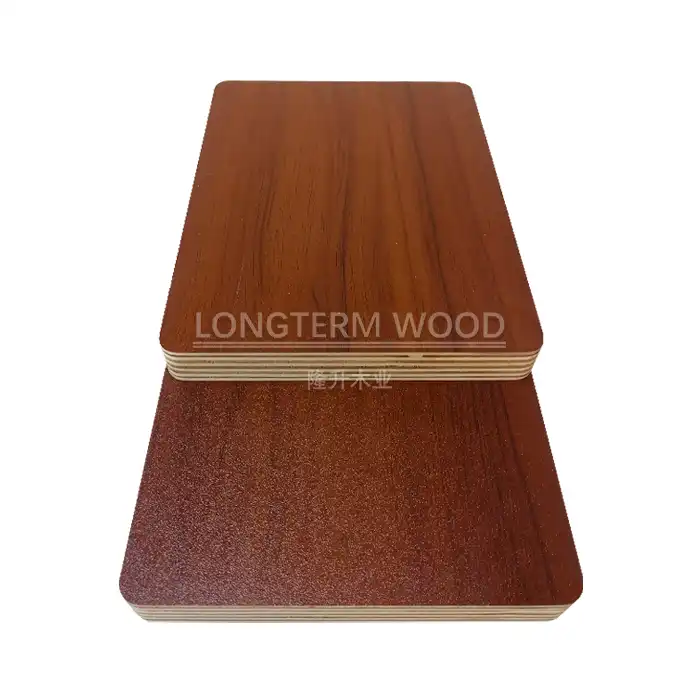
_1735099002931.webp)
